 |
| Picea glauca 'Pendula' |
Ginkgo biloba 'Chi Chi'
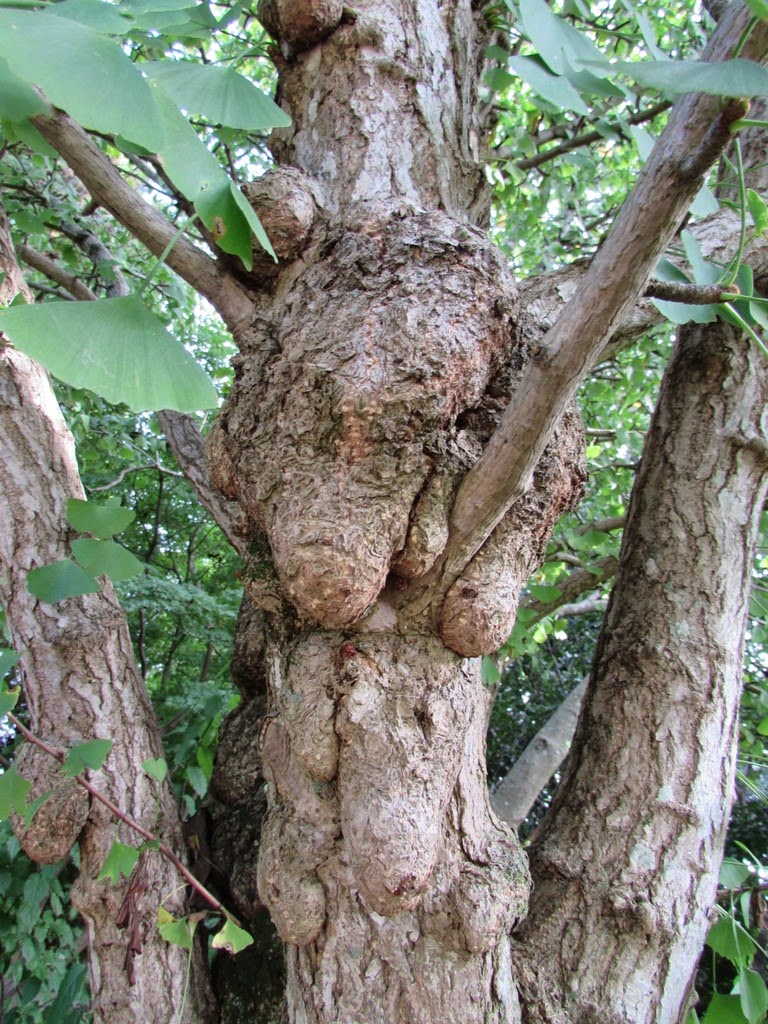 |
| Ginkgo biloba 'Chi Chi' |
 |
| Ailuropoda melanoleuca |
 |
| Acer shirasawanum 'Autumn Moon' |
Because of my obsession with plants, my two youngest girls are ahead of the curve with botanic classification. They know that Acer shirasawanum 'Autumn Moon'– Saya's favorite – is commonly called a Japanese maple, but they're also familiar with the binomial nomenclature system that was first advanced by Linnaeus. Due to the plant labels around our home, combined with young children's curious minds and active brains, Harumi was spouting "Picea glauca 'Pendula', Ginkgo biloba 'Chi Chi'" etc. at age two.* They were delighted to learn that animals – from ants to elephants – are classified the same way. For example, the "Giant Panda" is known in China as daxiongmao, or "big bear cat," but scientifically as Ailuropoda melanoleuca, literally meaning "black and white cat-foot."
*My three older children were certain that I had brainwashed her.
 |
| Sequoiadendron giganteum |
 |
| Chief Sequoyah |
 |
| Sir Arthur Wellesley, First Duke of Wellington |
Many botanic species names can be fascinating, as they reveal something interesting about the discoverer, or the botanist, or the location of the species, or something about the plant and so on. The origin of the word species is from Latin specere, meaning "to look," then it evolved to mean "a particular sort, kind or type." Sequoiadendron giganteum – the "giant redwood"– was given its specific name for obvious reasons. Why the genus name was selected, honoring a Cherokee chief who invented an alphabet for his people, a man who never ever saw a giant redwood, is more of a mystery. The British are still irked that Wellingtonia lost out due to the trivial detail that the name had already been used for another plant, but they still commonly call it Wellingtonia anyway. Even in The Hillier Manual of Trees and Shrubs, a sentence in the Sequoiadendron description contains wellingtonia, oddly with a lower-case w.
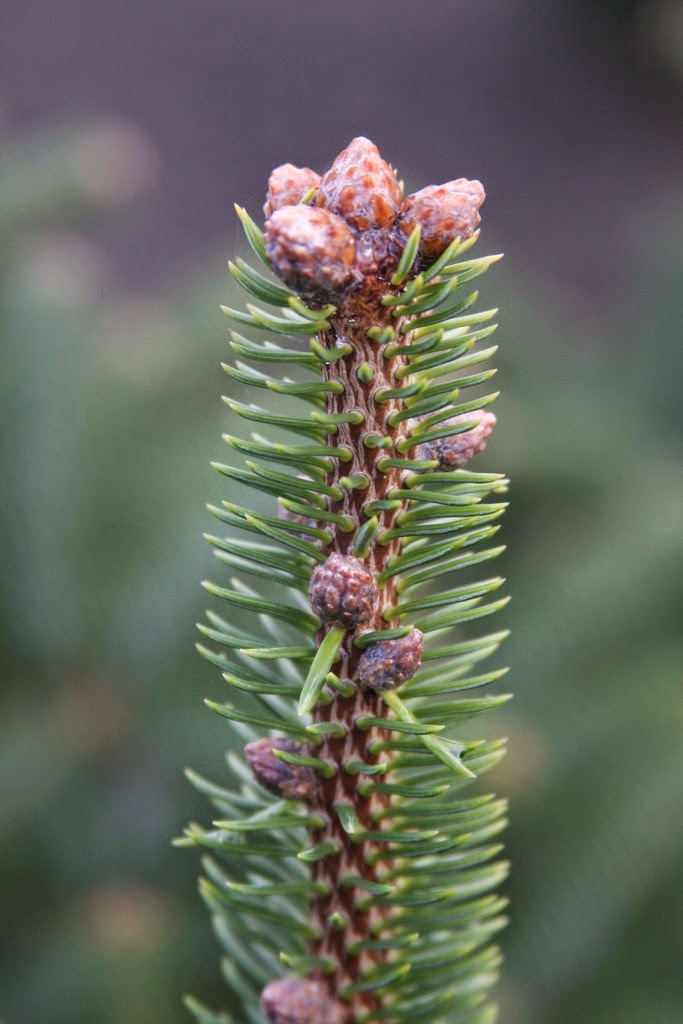 |
| Abies cephalonica 'Meyer's Dwarf' |
Abies cephalonica is the "Greek Fir" and was named for Kefalonia, the largest of the Ionian Islands off of western Greece. At the top of the island's tallest mountain – Mount Ainos at 1628 m (5,341 ft.) – is a natural park with Abies cephalonica, but it is also distributed throughout Greece, and I saw it years ago on Mount Olympus. Cephalonica is related to Abies bornmuelleriana and Abies equi-trojani, the latter known as the "Trojan Fir" from which the Trojan Horse was constructed. The botanist who named cephalonica was the Scotsman John Claudius Loudon (1783-1843), who was also a garden designer. Unfortunately Louden was afflicted by rheumatism and arthritis, and then he had is right shoulder amputated due to a botched operation to fix his broken arm and had to learn to write with the left hand. Later he had to cure himself of an opium addiction which he developed to endure his pains.
 |
| Rhododendron exasperatum |
Rhododendron exasperatum
Some plant people still believe the untruth about the naming of Rhododendron exasperatum, that botanists were exasperated with their efforts to know where to place it in the Rhododendron scheme of classification. Actually it was named by Harry Tagg in 1930 for its rough-ribbed leaves. Exasperate is from the Latin verb exasperare which is based on asper for "rough." Spiritus asper is a medical term for "rough breathing."
Picea orientalis
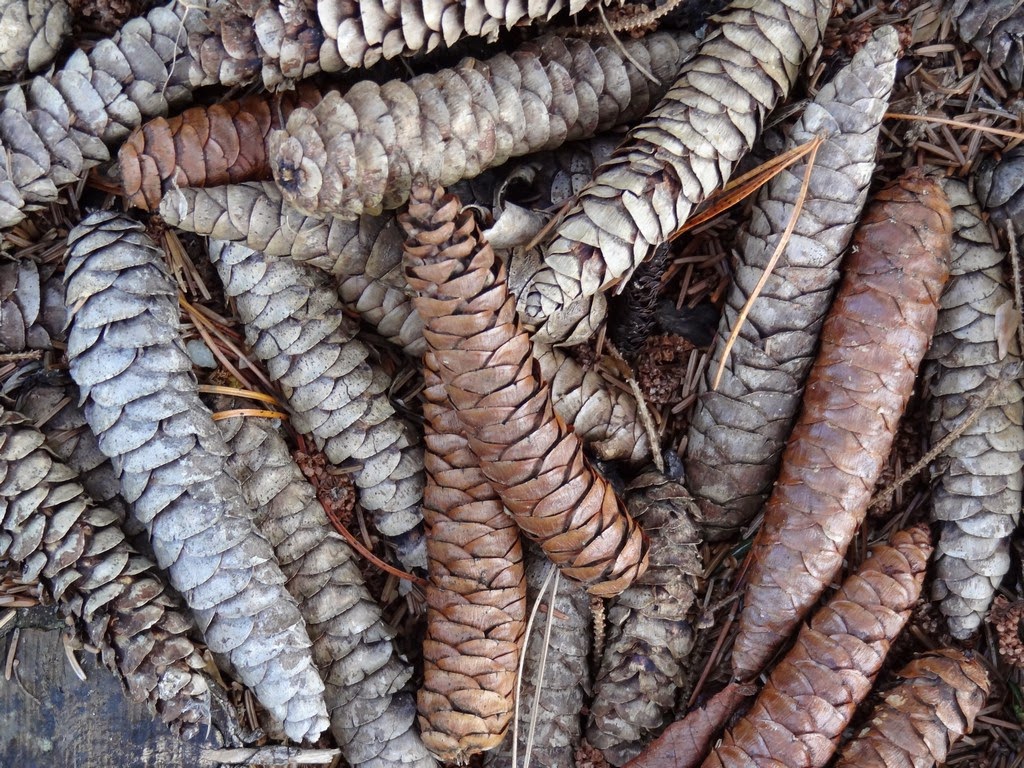 |
| Picea orientalis |
Where is the orient? I would describe it as places like Japan, Korea or China. When I began my career I assumed that Picea orientalis was from one of these countries, but I later read that it comes from the Caucasus Mountains of southern Russia and in northeastern Turkey. At one point for Europeans that was way east, the place where the sun rises. Orior is Latin for "rise," and later oriens meant "east.""It's all relative," Einstein used to say, noting that the Chinese considered their land to be at the center of earth's surface. The term opposite of orient is occident, from Latin occido, "to fall" or "set." Thuja occidentalis occurs in eastern North America, so it's not west for me, but it is a western tree if compared with Thuja orientalis from Japan and China. On the other hand, I fly west when travelling to Japan, to the Land of the Rising Sun, to the Far East. On the one hand is a thumb, four fingers and a pencil.
 |
| Picea orientalis 'Aureospicata' |
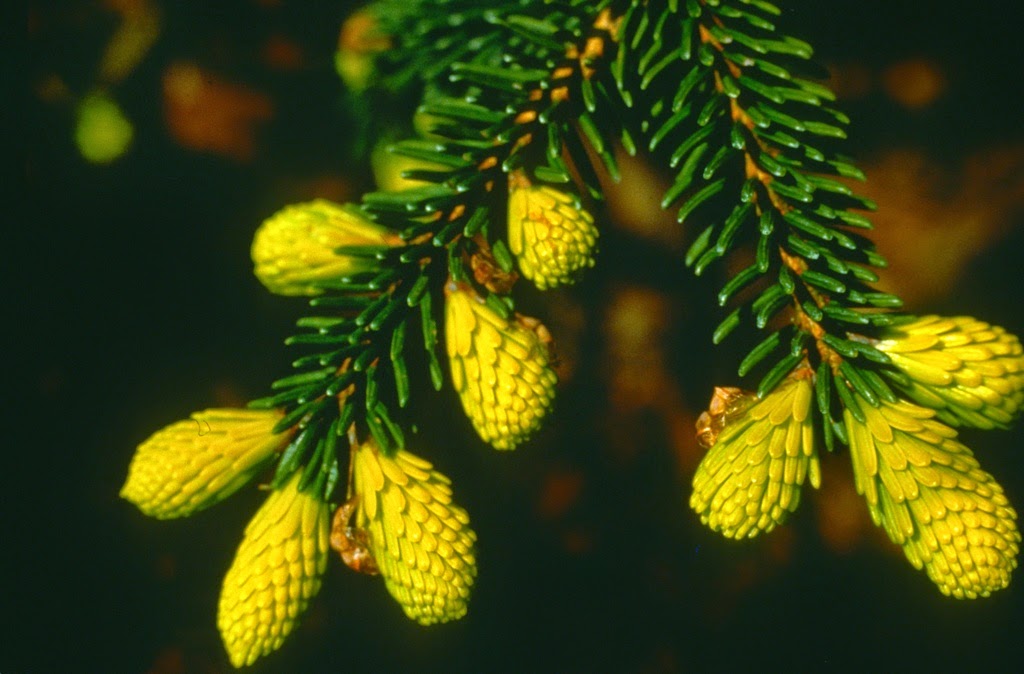 |
| Picea orientalis 'Aureospicata' |
Picea orientalis is a favorite species for me, though I've never seen it in the wild. We grow a number of cultivars, from tiny dwarves to large uprights. My first cultivar was 'Aureospicata', and I had to drive all the way to Nanaimo on Vancouver Island to buy it from a German nurseryman. I still have it in the original Display Garden and it is now over 40 feet tall. This old-timer cones prolifically, and scattered throughout the garden are seedlings, some green, some golden and some, like 'Aureospicata', with butter-yellow new growth, later evolving to green. We are trialing one we have named 'Lemon Drop' which appears to be more dwarf; but time will tell for we propagate by grafting onto vigorous Picea abies, the "Norway Spruce." Don't take me to task for naming a plant that is not fully tested, because I do it all the time. We have to call it something, and code names or numbers are not as easy to deal with. Besides, I might give one to a plant friend to try even before we're ready for general release.


Picea orientalis 'Sulphur Flush'
 |
| Picea orientalis 'Tom Thumb' |
 |
| Picea orientalis 'Tom Thumb' |
And that's what happened with Picea orientalis 'Skylands'. This golden cultivar was found at Skylands Farm in New Jersey in the 1950's. But then it was also marketed as 'Aurea Compacta' by nurseries apparently enamored with Latin. We also grow Picea orientalis 'Sulphur Flush' which is the same as 'Silver Seedling', but which name is correct? Picea orientalis 'Tom Thumb' is a golden miniature, a cute little bun, but it is also marketed as 'Tom Thumb Gold'. Again which? 'Tom Thumb', with or without the Gold, was discovered as a witch's broom on a 'Skylands', also in New Jersey. It was originally propagated by John Verkade who named it 'Compacta Aurea Tom Thumb' which is as invalid as you can get.
 |
| Picea pungens 'Hoopsii' |
 |
| Picea pungens 'Globosa' |
I have cut scions and grafted many thousands of Picea pungens, so I know the species well. I wondered why the species got its name, for it doesn't have a particularly strong smell, not like Viburnum foetida or Passiflora foetida. (foetida is from Latin foetidus, and in France one name is merde du Diable, or "Devil's faeces"). Back to the pungens "Colorado Spruce," the species name is derived from Latin pungere which refers to the sharp-pricking needles, not the smell. The root is similar to Latin pugnus for "fist" (in Greek pygme) and pugnar "to fight." I've had a pugnacious relationship with the Picea pungens cultivars for years, as I never wear gloves when I cut scions or graft. Back in the old days I would cut hundreds of Picea pungens 'Hoopsii' or 'Globosa' and my hands would be pricked to red.
 |
| Acer shirasawanum |
Gen ichi Koidzumi (1883-1953) was a Japanese botanist who researched Acers, among other plants. He is the one who coined the shirasawanum name in honor of Homi Shirasawa (1868-1947). Sometimes Homi is referred to as Yasuyoshi Shirasawa, but I don't have an explanation for that. In any case Shirasawa worked under Tomitaro Makino, the Father of Japanese Botany. According to Antoine Le Hardy De Beaulieu in An Illustrated Guide to Maples, the epithet is from shirasawanus and then to shirasawanum. According to my research, there are three genders that a Latin name can belong to: masculine, feminine and neuter. There are exceptions to the rule, but generic names ending in us are usually masculine, while names ending in um are usually neuter. I don't know if this rule-of-thumb applies to specific names as well, or how it has anything to do with Shirasawa's maple. I invite a smarty-pants to respond and set me straight, for I am rather dim when it comes to botanical matters.
 |
| Daphne cneorum 'Exima' |
 |
| Daphne cneorum 'Alba' |
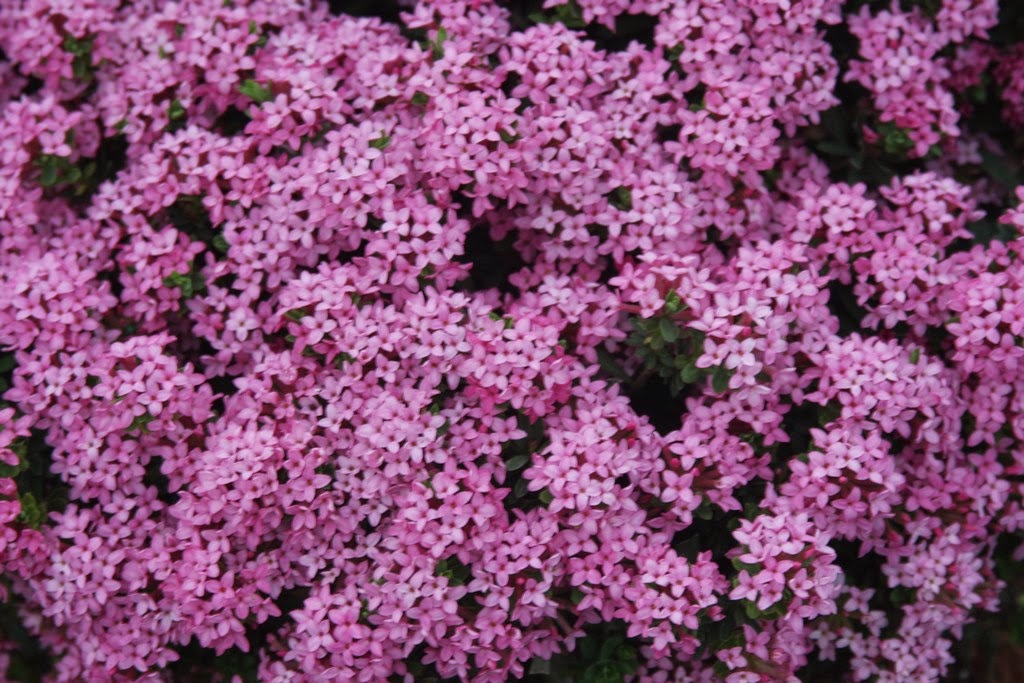 |
| Daphne cneorum 'Ruby Glow' |
Cneorum is an odd species name – as in Daphne cneorum (the rose Daphne) – since it is saddled with its silent "c."* It is from cneoron, the Greek name for Daphne gnidium, a poisonous evergreen shrub with green foliage and white flowers. D. cneorum is low, compact and more cute than D. gnidium – in my opinion – and is native to the mountains of central and southern Europe. We don't propagate the cultivars anymore; I threw in the towel as they can be touchy in pots, and my irrigation crew tended to drown the plants. At least we still have some nice specimens in the garden.
*There are some who think it is properly pronounced as suh-nor-um. Perhaps a Greek scholar could weigh in.
 |
| Apollo and Daphne |
Daphne means "laurel" in Greek, and in myth she was a nymph who was turned into a laurel tree by her father, to save her from being ravaged by Apollo. I may do the same with my young daughters.
 |
| Daphne bholua |
 |
| Daphne bholua paper making |
 |
| Daphne bholua paper making |
 |
| Daphne bholua paper making |
Daphne bholua – pronounced bo-lu-a* is a Himalayan species, and it has special meaning for me as I have seen it in the wild. Back when I was sturdy and vigorous I was on a trek in the Mt. Makalu (5th highest mountain in the world) area. Overtaking us on the trail were dozens of porters with their heavy awkward loads of bholua tied to their backs. Later we caught up with them near the village processing center. The common name for D. bholua is "Paper Daphne," and that is exactly what was being manufactured. All important documents, such as marriage contracts, property deeds etc. are on the Daphne paper. Back in the capital of Kathmandu I purchased a few sheets as a souvenir at the stationers shop. The owner probably had no clue where I had just come from and why I wanted the more expensive Daphne paper.
*The origin of the name bholua is the Nepalese name for the plant, bhulu-swa.
 |
| Beta vulgaris ssp. cicla |
 |
| Pulsatilla vulgaris 'Rubra' |
 |
| Pulsatilla vulgaris 'Alba' |
There are a number of plants with the specific name of vulgaris, such as Beta vulgaris ssp. cicla (Swiss chard), Calluna vulgaris 'Robert Chapman' (Robert Chapman heather) and Pulsatilla vulgaris 'Alba' (white Pasque flower), and none of these plants are vulgar at all. Vulgaris is derived from Latin vulgus for common, ordinary people, and I guess that at times the common people can be quite indecent, coarse or obscene. Medically you can be afflicted with Acne (another Greek word) vulgaris, Verruca vulgaris (warts), and other skin diseases like Vitiligo vulgaris where patches of skin can lose its pigmentation.

Mahonia aquifolium
 |
| Flag of Mexico |
A little hobby I have is to ask plantspeople what the specific name aquifolium is referring to, as in Mahonia aquifolium. Invariably they respond that the foliage has a "wet" look. That's what I used to assume as well, but actually it refers to the spiny barbs on the leaves. One could say that these barbs resemble an eagle's beak, and in Spanish the word for eagle is aquila. The Mexican flag contains a vertical tricolor of green, white and red. In the center is the national coat of arms, and an eagle is holding a serpent in its talons. The eagle is perched atop a prickly-pear cactus, and that atop a rock in a lake. All due to an Aztec legend that their Gods told them to build a city where an eagle was eating a serpent, and now it is the present-day site of Mexico City. What is confusing is that aqui or aqua is Latin for water. Aqui also means here in Spanish, as in Estoy aqui, or "I am here." Some botanists insist that Mahonia aquifolium, the "Oregon Grape," should be Berberis aquifolium, and it's true that this plant is in the Berberidaceae family. In any case Mahonia was named by Thomas Nuttall for plant nursery owner and friend Bernard McMahon in 1818. McMahon (1775-1816) is credited with publishing America's first seed catalog. He was also a friend of Thomas Jefferson, and some of the Lewis and Clark Expedition planning was done in his home, and upon the expedition's return, McMahon germinated and distributed plants from the trip.

Sisyrinchium douglasii
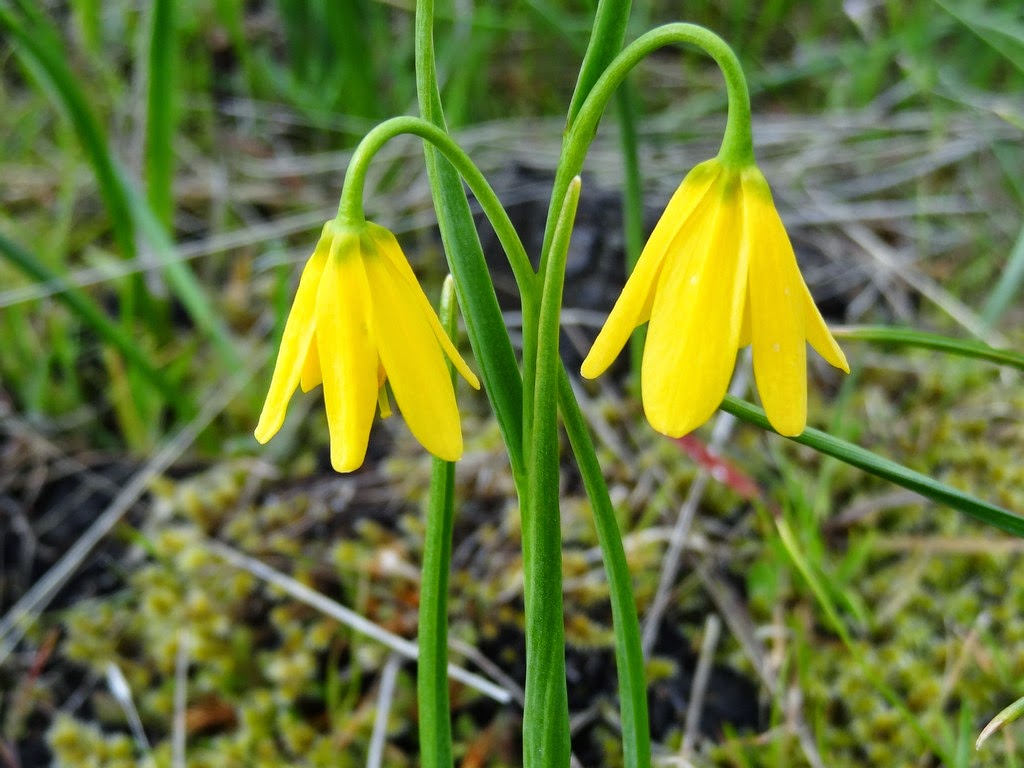 |
| Fritillaria pudica |
 |
| Venus pudica |
Many visitors to Oregon probably restrict themselves to Portland and the Willamette Valley where the grass and trees are green, but the bulk of Oregon – to the east of the Cascade Mountains – is a far different country. The Douglas Fir and Western Hemlocks give way to Ponderosa Pine, and at Kathryn Creek on the Washington side is a nature reserve that I like to visit at least once a year. Every season is different, but if you arrive at the right time (usually mid-March) you will see the "Douglas Blue Eye Grass," Sisyrinchium douglasii, and if you keep a sharp eye you may even stumble onto a white-flowered form. Of course, the species honors David Douglas, the famous Scottish plantsman. You might also find a wildflower more rare than the Blue Eye Grass, Fritillaria pudica growing on steep slopes. This charming sweetheart in the Liliaceae family features butter-yellow flowers on nodding stems. You have to stoop and lift up the flowers to see inside this low-growing bulb. Pudica is the feminine form of pudico which means "modest," and in western art it is a classic pose – the Venus pudica – where one hand covers the woman's private parts. Men are not depicted as so modest, although the member size can vary greatly.
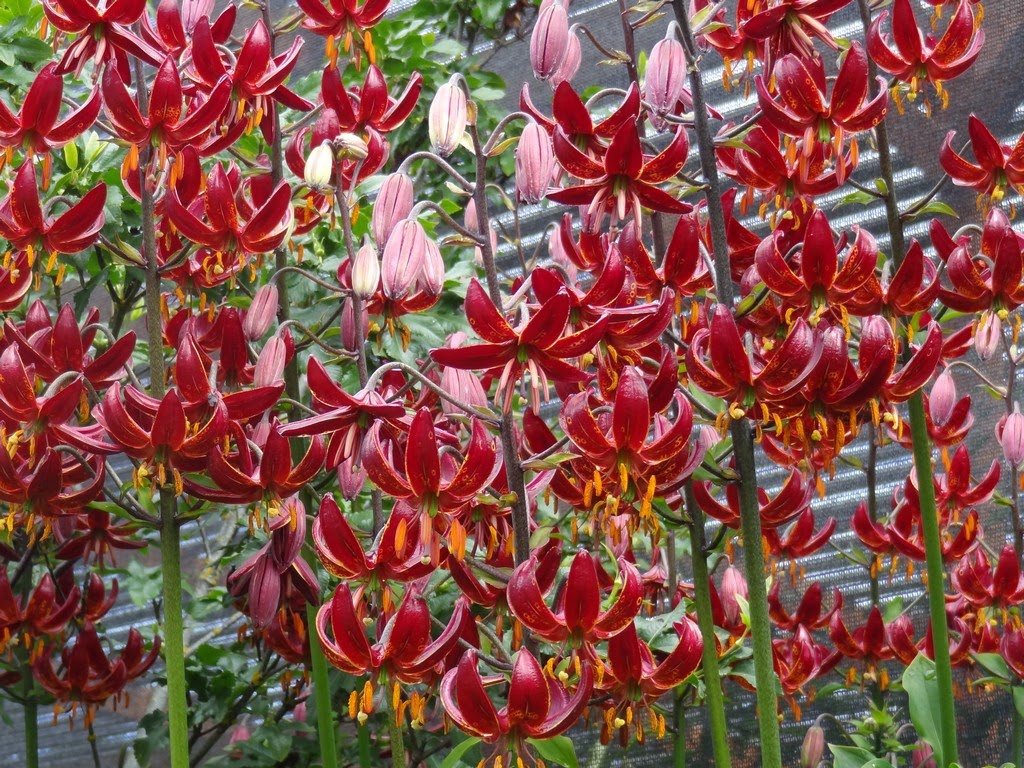 |
| Lilium martagon 'Claude Shride' |
Some other species names that I find interesting: Lilium martagon is the "Turk's Cap Lily," coming from a Turkish word meaning "cap" or "turban" due to the reflexed petals.
 |
| Myrteola nummularifolia |
Myrteola nummularifolia – the specific name means "like a coin" (Latin nummus), and nummulus is diminutive of nummus.
 |
| Quercus robur 'Butterbee' |
Quercus robur was named for its reddish hardwood, from Latin ruber for "red."
 |
| Punica granatum 'State Fair' |
Punica granatum (Pomegranate) is from Latin granum for "grain" or "seed," and granatus "having many seeds."

Quercus suber
Quercus suber is the Latin name for the outer-bark of the "Cork-Oak," from the Greek syphar for wrinkled skin.
 |
| Rhododendron clementinae |
Rhododendron clementinae was named for the Scottish plant explorer George Forrest's wife, Clementina Traill.
By the way, I occasionally refer to the botanical family that a genus belongs to, as in Berberidaceae for the Mahonia genus. These families are not a part of the binomial system of nomenclature, but are groups of genera, and their names occur by adding the suffix aceae to a name of a genus of that family. But keep in mind that the botanical classification of plants is never finished, never absolute, but is an ongoing process that merely reveals our current understanding of a plant.
Plant is Latin planta for "sprout" or "cutting," and then went into Old English plante for a young tree or shrub newly planted, or an herb newly planted.
I don't want to come across as a plant policeman, or as a nomenclatural Nazi, but rather as an aficionado of plant names. Nomen is German for "name," and after all I am of Germanic origin, so nomenclature is my particular lingua.*
*Tongue in Latin.








